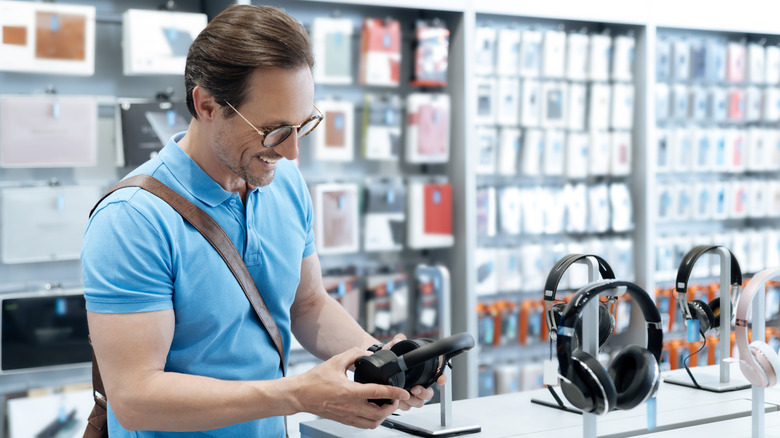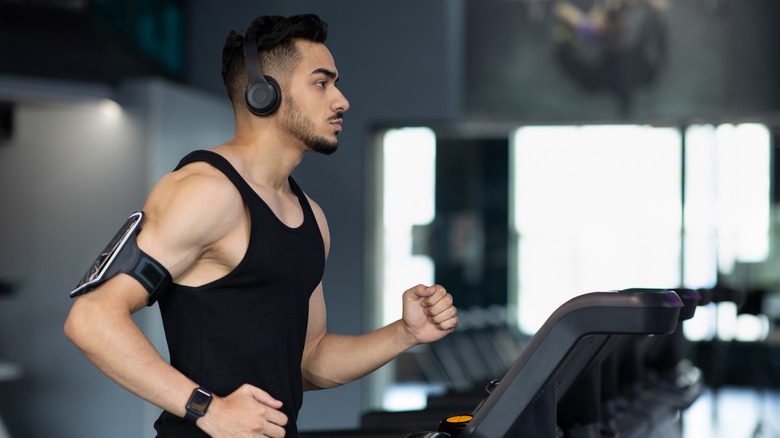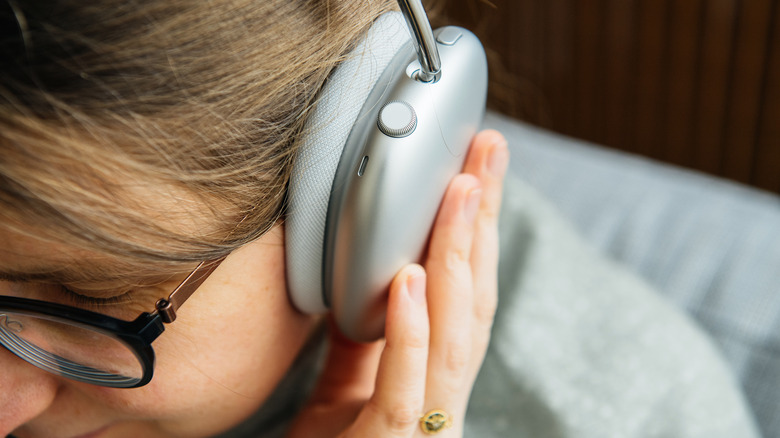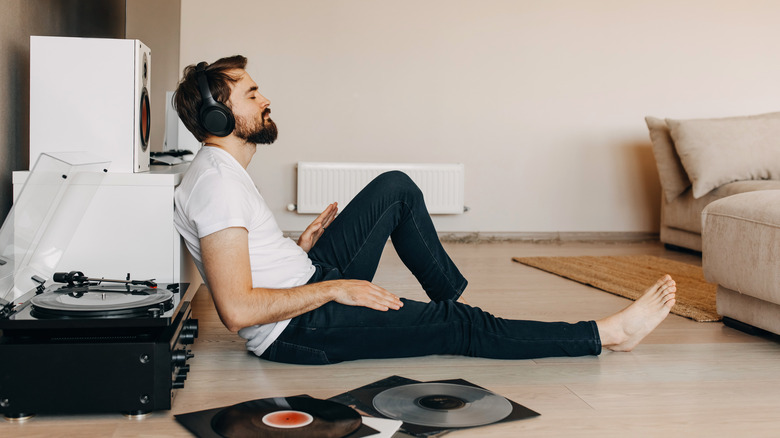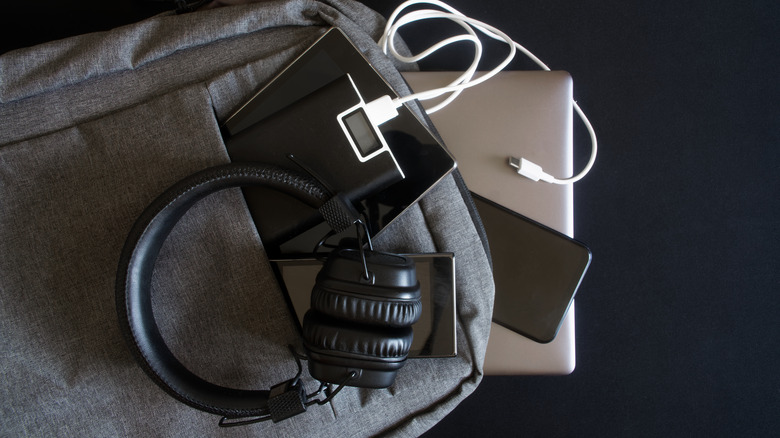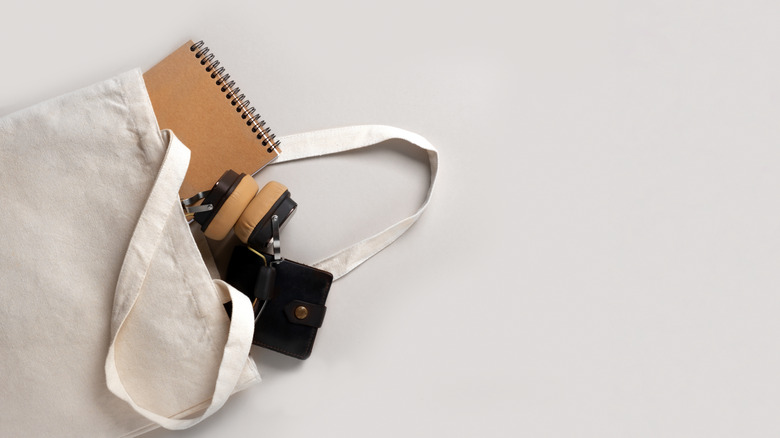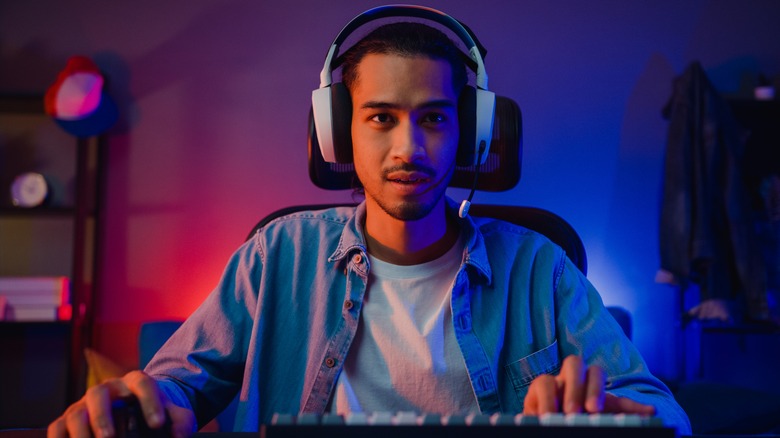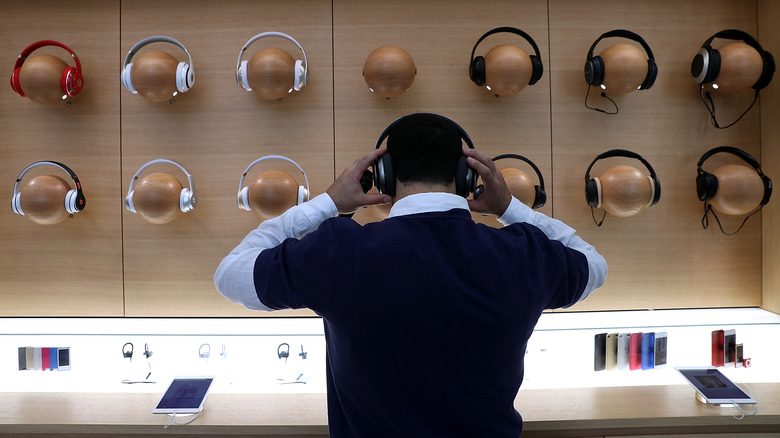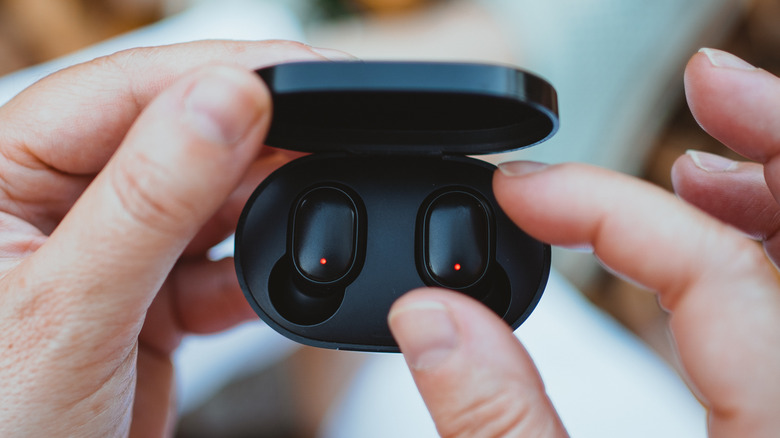Mistakes People Make When Buying Bluetooth Headphones
We may receive a commission on purchases made from links.
As technology progresses we find ourselves looking for more convenience as a society. One of these advancements has been the growing trend in Bluetooth headphones. Bluetooth is a wireless technology that uses a radio frequency to share data over a short distance, removing the need for wires.
It's no surprise that Bluetooth headphones, therefore, became incredibly popular for their ability to operate hands-free. Even more so, when multiple manufacturing brands entered the market, prices decreased and wireless headphones became accessible and affordable for all.
With so much variety in designs and specifications, some people tend to make a few blunders when buying their first pair of Bluetooth headphones. They're so excited about the wireless capability that they overlook the smaller things (and bigger things) that can drastically improve their overall experience.
We've compiled a list of the most common mistakes people make when buying Bluetooth headphones, to give you the best chance at securing a wireless experience catered to your personal preference.
Forgetting the comfort factor
If you've chosen the wireless route, there's a good chance you'll use your headphones for a few hours a day. Most people think headphones are a one-size-fits-all experience, but this is far from the truth. Sure, you can adjust the position of the earcups to suit the shape of your head, but this isn't the only thing you should be aware of.
Since Bluetooth headphones don't have a cable with in-line controls, everything will usually be found on the headset, including additional buttons. They'll also include built-in rechargeable batteries, which can add serious weight to the headset.
Moreover, the clamping force of the headband might be too tight depending on the materials used and whether it can be adjusted. Headphones that are both flexible and durable are therefore what you should prioritize.
Your Bluetooth headphone comfort is also highly dependent on the cushioning system and ear cover material. Memory foam cushioning can offer comfortable support against the internal drivers, for example, those seen in the Logitech G Astro a30 wireless gaming headset.
This brings us to the cover material placed over the headphone cushioning itself. PU leather and fabric are the most common options, but each comes with its own drawbacks. PU leather helps lock in sound but is prone to heat and sweat, while fabric covers offer better breathability. However, fabric tends to lose bass and sound isolation. Therefore before choosing your next pair of Bluetooth headphones, factor in your surroundings.
Not considering controls and accessibility
Without an in-line cable remote, Bluetooth headphones are either controlled via built-in buttons, voice commands, or app support. While all of these options can certainly get the job done when making changes to your volume or track list, they can raise a few issues.
Built-in buttons are the most common controls found on Bluetooth headphones. They are often found on the side of the earcup and can range from a volume slider to a multi-function button. A multi-function button is the most popular option, as it can play, pause, or skip music while saving space. The only issue is, you'll need to learn the specific inputs to correctly use the multi-function button. If you toggle the incorrect input pattern, you may end up accidentally shuffling your favorite playlist.
Headphones that use voice commands, such as Airpods and Siri, are usually toggled via a simple tap (or multiple taps) or swipe on an earbud. This is similar to a multi-function button, but instead of learning the different inputs, you'll speak the instruction, such as "turn volume up." Now, let's say you're in a noisy environment, those voice commands might not get picked up.
Some Bluetooth headphones have no buttons at all, and their controls will be found on your smartphone via app support. While this sounds more practical, you might not be in a position to easily use your smartphone, for example running on a treadmill. You, therefore, need to consider what kind of remote control and accessibility options work best for you.
Not accounting for noise cancellation
Some Bluetooth headphones are advertised as having active noise control (also known as ANC). This is a noise-canceling feature that removes unwanted sounds by adding a secondary sound that is designed to cancel the first. You can, therefore, listen to audio without increasing the overall volume and deafening your ears. Additionally, some headphones also allow you to customize the active noise control level, so you can keep your wits about and know what's going on around you.
While this feature is certainly a boon, it can cause significant battery drain. The Sony WH-100XM4 is a great example of this. Users can get up to 38 hours of battery life with ANC turned off, but when toggled on, the headphones diminish to around 30 hours. The Sony WH-100XM4 is also a high-end pair of headphones, so lesser devices may see an even further decrease.
Microphones also tie into noise-canceling when looking at Bluetooth headphones. Most Bluetooth headphones have a hidden built-in mic that is susceptible to background noise.
If you're using your wireless headset in a noisy environment and want to make a phone call, you'll be glad your headset has some sort of noise cancellation feature, so the receiver can hear you clearly.
Problems, therefore, arise when manufacturers advertise their headphones as noise-canceling, but don't distinguish whether it's for the audio drivers or the microphone alone. You'll consequently have to consider battery life importance, in addition to being vigilant as to whether your Bluetooth headphones include a quality noise-canceling microphone.
Selecting the wrong audio codec
The sound that is sent to your Bluetooth headphones needs to go through an audio codec. Your media device and Bluetooth headphones need to share the same type of audio codec. An audio codec is a compression technology that makes it easier to transfer data. Ideally, you'd want to transmit a high-fidelity signal, while maintaining a smaller bitrate. Unfortunately, different codecs mean different qualities of sound, so you'll need to consider the following when deciding on your budget and performance needs:
SBC Is the default audio codec found among all wireless Bluetooth headphones. It can achieve a transfer rate of up to 320 kbps and is regarded as a subpar audio quality. While it may be passable for some, it isn't going to be enough for music enthusiasts who want high-quality sound.
A much higher quality codec is aptX, as it has a bitrate of 352 kbps with lower latency. You'll hear fewer drops in audio quality and is more or less satisfying for the casual music listener. With aptX HD you'll get a high-definition upgrade to aptX at a bitrate of 576 kbps. The only downside is that it's still somewhat new so fewer media devices support it.
AAC is an upgraded version of SBC. Although it has a 256 kbps bitrate, the sound quality has been optimized to where it is comparable to aptX.
Assuming acceptable battery life
The battery life on your Bluetooth headphones often depends on the quality and brand of your headset. Most entry-level models will feature 15-20 hours of battery life, but you can find highly efficient headphones that can go beyond 40 hours. These values can also fluctuate based on the level of volume, so you should take all advertising boasts with a pinch of salt.
Nevertheless, 15 hours of battery life sounds pretty good, right? That should be plenty to get you through the entire day. But how do we know when the battery life is running out? If you're lucky, your Bluetooth headphones will have an LED indicator that can warn you if the battery is low. Alternatively, you might find a battery life indicator on the device's screen you have connected to. The worst-case scenario is a pair of Bluetooth headphones that have neither, and decide to turn off unexpectedly.
Once your Bluetooth headphones require a charge, you'll also experience the performance difference between USB-A and USB-C. If you have a modern smartphone, you're probably used to USB-C charge times of around 2-3 hours at most. Some Bluetooth headphones include this connection type and have a fast charge feature that can get you to 40-50% in 30 minutes. Some Bluetooth headphones still use USB-A charging, so you're looking at 4-5 hours. You should therefore check if your headphone has a battery life indicator, and what rechargeable cable type is compatible.
Not noting the Bluetooth version
Bluetooth allows your headphones to communicate wirelessly with your media device. While the primary function has remained the same throughout the years, there have been a lot of enhancements in regard to the different versions available. We have seen improvements in speed, range, and power requirements. Although versions 1 to 3 were popular, they're significantly weaker than their successors. You should therefore opt for versions 4 or 5 if possible.
Bluetooth 4 was released in June 2010. It offered the new Bluetooth Low Energy technology, which optimized smaller devices such as headphones so they could stay connected for longer. Previous Bluetooth versions had a range of 10-30 meters, but version 4 doubled the range to 60 meters (200 feet). Additionally, around the same time, the aptX codecs were released in conjunction with version 4's improved 24 Mb/s transfer speed, which meant quicker response times and less lag between devices.
Bluetooth 5 was released in July 2016, and further improved upon Bluetooth 4 with even better transfer speeds of 50 Mb/s and a range of 240 meters. It also offered less power consumption and refined reliability with fewer drops in connectivity.
If you're choosing a pair of Bluetooth headphones, you should also note that the estimated range is not the same indoors. 60 meters will translate to roughly 10 meters, while 240 meters gets around 40 meters. Therefore, the better the version, the further you can move away from your media device.
Seeking an unnecessary multipoint pairing feature
Have you ever wanted to listen to audio on your laptop, while still having the ability to receive notifications from your smartphone? Well, multipoint pairing is a Bluetooth feature that allows you to connect your Bluetooth headphones to more than one Bluetooth-compatible device. You can therefore maintain a simultaneous Bluetooth connection between your laptop, smartphone, and headphones.
Although this feature might sound appealing, and you're probably thinking about streaming two audio sources at once, there are some limitations. Multipoint pairing is almost always restricted to a continuous audio source and push notification only. You therefore cannot listen to a TV show on your laptop while watching TikTok videos on your smartphone.
Multipoint pairing should also not be confused with dual wireless capability. Newer headphones like the Logitech G Astro A30s advertise a 2.4 GHz wireless dongle and Bluetooth connectivity. Once again, you won't be able to listen to both audio sources at the same time. You'll need to disconnect and reconnect to your chosen connectivity option and device.
This brings us to the price-to-performance perspective. Multipoint pairing functionality will increase the asking price, and for some, it might not be worth it. The feature is quite specific to a niche group of working people. Unless you actively need to be aware of incoming notifications while listening to additional audio, the feature is not worth the extra money.
Overspending on short-term headphones
A common mistake most people make when buying Bluetooth headphones is going after premium brands and high price tags. The Apple AirPods Max headphones retail for around $500, and although they're exceptionally good, there are much cheaper alternatives such as the JBL Tune 510BT, which can cost less than $30 on sale.
Now, of course, the Apple AirPod Max headphones will have better sound, comfort, and overall build quality, but headphones such as the JBL 510BT can still provide an enjoyable wireless experience. For example, if you're planning to use your headphones for an hour a day, why over-invest if you don't have to? Furthermore, if they're damaged after their warranty period, did you really get a worthwhile experience out of them?
High-end headphones tend to come with the same warranty periods as their cheaper alternatives. Apple headphones come with a 1-year warranty plan. You should therefore consider whether your current habits are suitable for high-end Bluetooth headphones. If you're throwing your headset into your backpack on the regular, perhaps you won't see as much longevity as you hope.
With that said, we're not saying you should always opt for budget Bluetooth headphones. If you're careful, and you're an audiophile, then the performance-to-price increase will be justified. Just make sure whatever price you pay, correlates to your caring habits and how long you intend to use the Bluetooth headphones.
Underestimating the impact of audio latency
Previously we spoke about the variations in audio codecs and the different versions of Bluetooth. These technologies play an important role in the quality of your sound. Together they also have an impact on latency. Latency is the delay between the audio signal being sent and when it is received. While latency won't be as noticeable when you're listening to music, it can be quite unpleasant when you're watching a movie or playing a video game.
If you're looking for a pair of Bluetooth headphones that can work with music, movies, and video games, you should therefore prioritize an aptX Low Latency codec and Bluetooth 5. The aptX Low Latency in particular has been designed for a maximum of 40 ms in latency. Other codecs such as aptX HD might offer a higher quality of sound at 576 kbps, but there is an audio delay of 250 ms. It's consequently a choice of sacrificing great audio quality for good audio quality with less delay.
Will aptX Low Latency be enough for competitive gaming? Well, that's a different story altogether. While 40 ms is good enough to keep your frames in sync, it's not as responsive as a 2.4 GHz proprietary radio frequency headset such as the Logitech G Pro Wireless. In a nutshell, if you're a casual gamer and movie enjoyer, an aptX Low Latency Bluetooth headset will be enough, whereas pro gamers should look toward 15-20ms 2.4 GHz headphones.
Being misled by specifications
If you understand certain specifications of Bluetooth headphones, it's possible to get an estimation as to how good their sound quality will be. Although this isn't as accurate as listening to the headphones in person, it can help you rule out options that will be a definite disappointment.
Generally, when choosing Bluetooth headphones, driver size is always advertised and promoted. For instance, you'll see certain brands highlight 50 mm drivers. Manufacturers often try to trick us into thinking that bigger means better, but this is far from the truth. Although larger drivers can produce a louder sound, it doesn't mean they deliver a higher quality of sound. Specification sheets also like to mention multiple drivers. Once again, more does not mean better. A single driver that is well-built and optimized will outperform multiple poorly-constructed drivers.
What's actually important is the type of driver and the materials used in its construction. For example, dynamic, electrostatic, and hybrid drivers are all great choices. In terms of material, graphene is also something to look out for. It's cost-effective, flexible, and durable under high power levels.
Additionally, ensure the Bluetooth headphones you buy cover a frequency range of 20 to 20,000 Hz for a balanced sound profile. You'll want to hear lows, mids, and highs throughout your audio. Finally, the sensitivity should be 75 dB to 110 dB, as this is regarded as a safe range for listening. Loudness is cool, but you don't want to go deaf rocking out.
Picking headphones over earbuds
Bluetooth headphones and earphones are often intertwined in audio descriptions, but you might actually be better off with the latter. Before buying your next pair of headphones, you should definitely consider the advantages that Bluetooth earbuds can provide. These may be more catered toward your ideal wireless listening experience.
The biggest advantage an earbud provides is portability, and this can be interpreted in so many ways. For starters, Bluetooth earbuds are so much easier to carry around, especially because most of them come with their own carry case that doubles as a fast charge station. This means no more cables while traveling, and easier quick storage in your backpack.
Furthermore, if you're an active gym goer, they're much more stable inside your ears versus headphones which are over ears. When earbuds fall out, they'll usually survive the fall damage, while headphones are a bit of a gamble. Earbuds are also much lighter, so you won't have to worry about the strain that comes with a heavy pair of headphones or padding that isn't thick enough.
Earbuds can also have their drawbacks. Headphones usually offer a better quality of sound, especially around the lower bass frequencies. Since earbuds are located directly inside the ear canal, they can also be quite strenuous and fatiguing to your hearing in the long term. You'll therefore have to weigh your own personal preferences and intended uses to which device suits your lifestyle best.
Going wireless when you don't have to
Before buying Bluetooth headphones, you should always consider if wireless is really necessary for your personal needs. If you live an active lifestyle, with portability and freedom of movement being a priority, then Bluetooth headphones are ideal. However, if you have a more sedentary lifestyle, a wired pair of headphones might be the better choice between the two.
While there have been improvements in sound quality in Bluetooth headphones, wired headphones will always reign supreme. Since they're wired, you'll never have to worry about any delays, interferences, or deteriorating sound quality. Therefore, if you're serious about studio-quality sound, wired headphones are the better choice in terms of raw performance.
Additionally, you won't have to worry about charging your headphones or an unexpected dead battery. Wired headphones are always a plug-in-and-play experience. Moreover, since wired headphones don't require a built-in rechargeable battery, they're often much more affordable than their wireless brothers. This also allows brands to put all their effort and budget into the actual construction and components, giving you the best value for money.
That's not to say wired headphones are without their own issues. Cables do tend to tangle and wear down over time. The choice is however similar to earbuds in that it's all about personal preference. Our suggestion? If you're always mobile lean towards Bluetooth connectivity, whereas music professionals and desk workers will be better suited to a wired experience.
